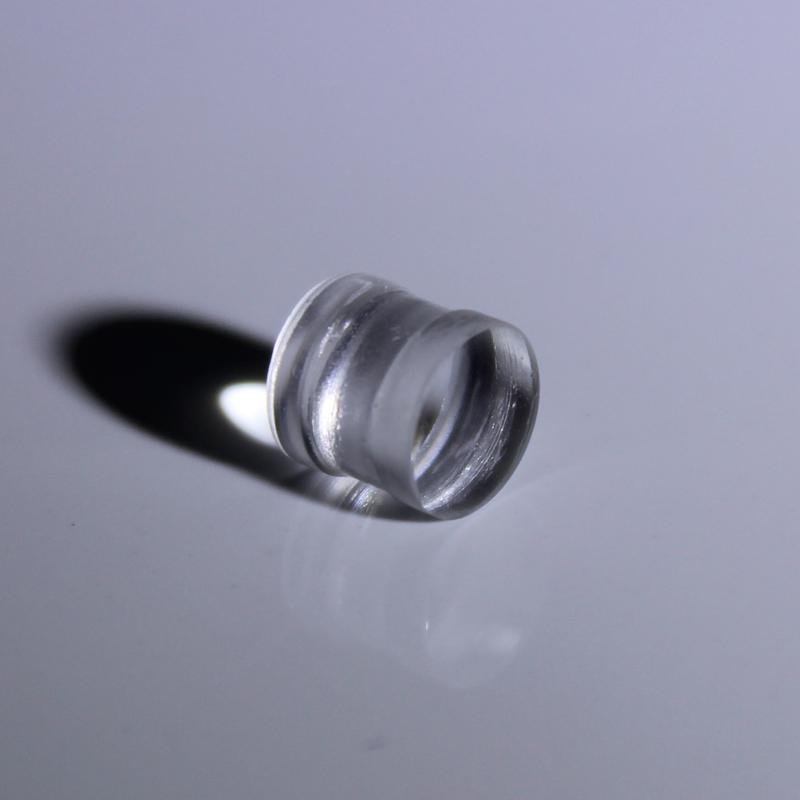
Triplet glued lens prism from Chinese suppiler
Triplet glued lens prism from Chinese suppiler
Item No: W-P10S10T1401A
An achromatic lens can be defined as a lens which is made by a combination of two different types of lenses carrying different focal powers in a manner such that the images formed by the light of both the combined lenses are free from chromatic aberration or achromatism.
- Material: K9 glass, fused silica glass, SF11 glass etc.
- Dimension: 1mm-300mm
- Surface Accuracy: lambda / 10
- Size Tolerance: +/-0.01mm
- Angle Tolerance: 30 arc seconds
- Coating: AR coating, non-polarizing coating, optional ,customized
Quote Now
What is achromatic lens?
Definition: An achromatic lens can be defined as a lens which is made by a combination of two different types of lenses carrying different focal powers in a manner such that the images formed by the light of both the combined lenses are free from chromatic aberration or achromatism.
Description: A lens which is specially designed to control the effects of chromatic distortion or aberration (a defect of optical lenses to bring the focus of all colours to the same convergence point) is called an achromatic lens. It is widely known as an ‘achromat’. The correction in lenses is made by bringing the wavelengths of both the lenses into focus on the same plane. The wavelengths generally are in red and blue colour.
The most commonly used and the earliest example of an achromatic lens is the achromatic doublet. An achromatic doublet is made from a pair of glasses, of which one is typically a concave and another is convex. The concave element of the doublet is composed of flint glass (with higher dispersion); the convex element, however, is made up of crown glass (with low dispersion). These two elements are placed (cemented) next to each other in such a manner that the chromatic aberration of the one element is balanced by the chromatic aberration of another. There are various types of achromatic lenses, which differ in the type of lens elements and optical properties. Some examples of achromatic lenses include Clark doublet, Dialyte, Steinheil doublet, Littrow doublet and Oil-spaced doublet.

History of achromatic lens
Theoretical considerations of the feasibility of correcting chromatic aberration were debated in the 18th century following Newton’s statement that such a correction was impossible (see History of the telescope). Credit for the invention of the first achromatic doublet is often given to an English barrister and amateur optician named Chester Moore Hall. Hall wished to keep his work on the achromatic lenses a secret and contracted the manufacture of the crown and flint lenses to two different opticians, Edward Scarlett and James Mann. They in turn sub-contracted the work to the same person, George Bass. He realized the two components were for the same client and, after fitting the two parts together, noted the achromatic properties. Hall used the achromatic lens to build the first achromatic telescope, but his invention did not become widely known at the time.
In the late 1750s, Bass mentioned Hall’s lenses to John Dollond, who understood their potential and was able to reproduce their design. Dollond applied for and was granted a patent on the technology in 1758, which led to bitter fights with other opticians over the right to make and sell achromatic doublets.
Dollond’s son Peter invented the apochromat, an improvement on the achromat, in 1763.
Anatomy of an Achromatic Lens
An achromatic, also referred to as an achromat, typically consists of two optical components cemented together, usually a positive low-index (crown) element and a negative high-index (flint) element. In comparison to a singlet lens, or singlet for short, which only consists of a single piece of glass, the additional design freedom provided by using a doublet design allows for further optimization of performance. Therefore, an achromatic lens will have noticeable advantages over a comparable diameter and focal length singlet.
An achromatic lens comes in a variety of configurations, most notably, positive, negative, triplet, and aspherized. It is important to note that it can be a doublet (two elements) or triplet (three elements); the number of elements is not related to the number of rays for which it corrects. In other words, an achromatic lens designed for visible wavelengths corrects for red and blue, independent of it being a doublet or triplet configuration.



 Why choose achromatic lens?
Why choose achromatic lens?
A single lens used to form an image will always show some chromatic aberration, that is variation of focal length with wavelength. Achromatic doublet lenses and triplet lenses correct for this as they are constructed from two or three different glass types and designed to remove first order chromatic aberration. Generally spherical aberration is reduced at the same time. Achromatical lenses are widely used to form images, for example telescope objectives, and also to focus laser beams.
These quality achromats have been designed and optimised for performance and are available as positive and negative focal length types. We stock a full range of achromatical lenses from small 3mm dia up to 110mm dia to meet a range of demanding applications. Typical applications where achromatic doublet lenses are used are imaging, analysers, fibre-optic lighting, laser range finders endoscopes and borescopes.
We can offer custom achromatic doublet and triplet lenses to meet your requirements or alternatively edge stock lenses for a quick turnaround, please enquire.
ANYTHING YOU COULDN’T FIND?
Talk With Our Sales
Vyoptics dedicated to being the supplier you choose for your custom optic fabrication. From volume production to prototype, we will meet any require specifications at the most cost effective solution.
- Free quotes and design consultations
- Comprehensive brochure you can download
- Worry-free returns
- Lightning Delivery
- OEM&ODM
- Fast Respond Or enthusiasm
- Rapid Production
- Low MQQ
SEND US AN EMAIL
Contact Us
Welcome to discuss your purchasing requirements with our customer service.









